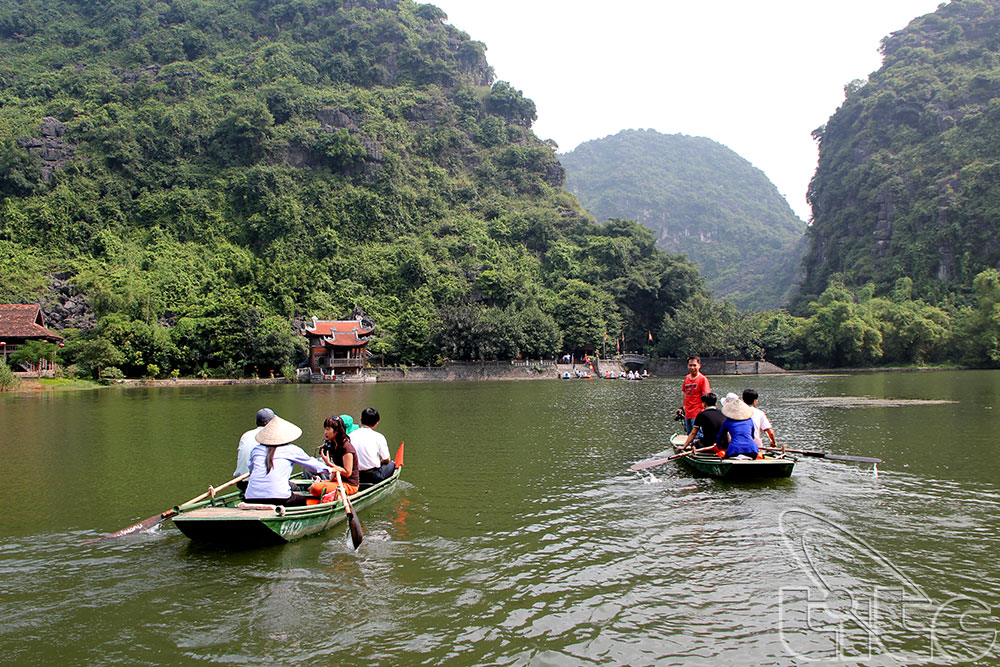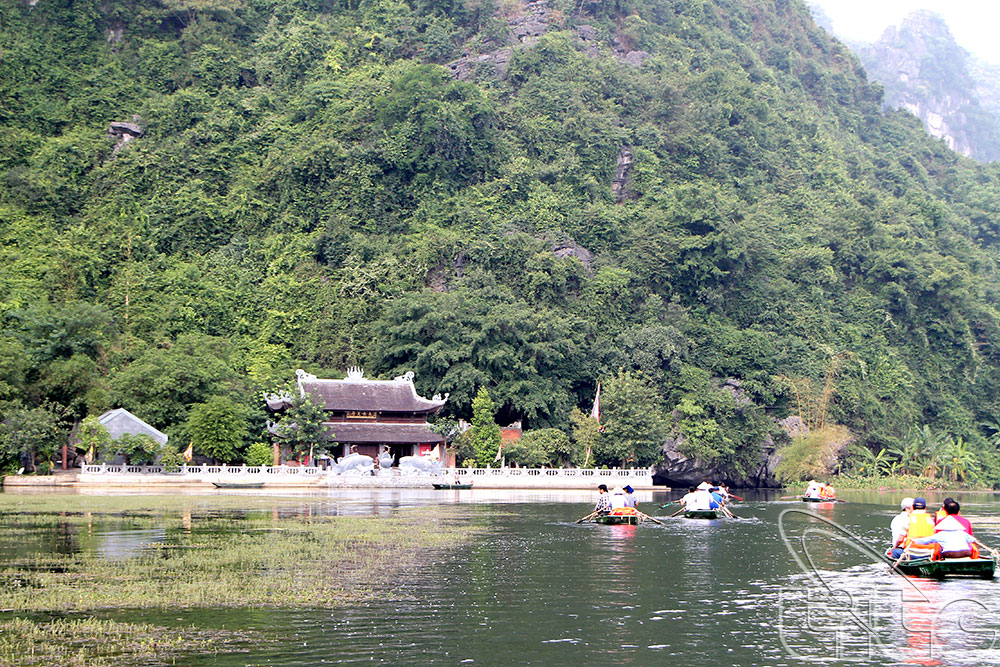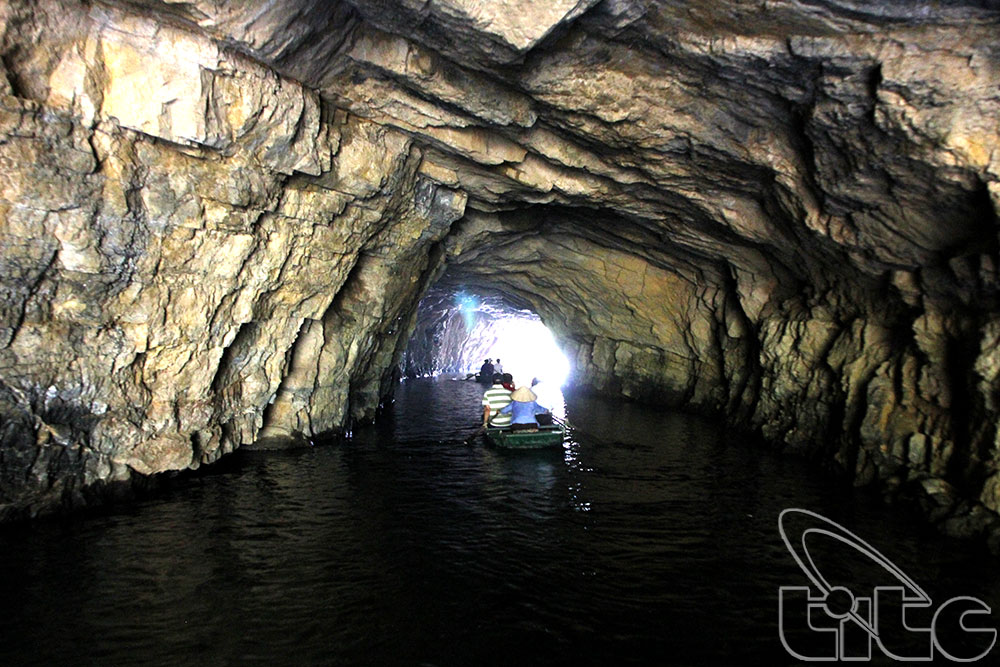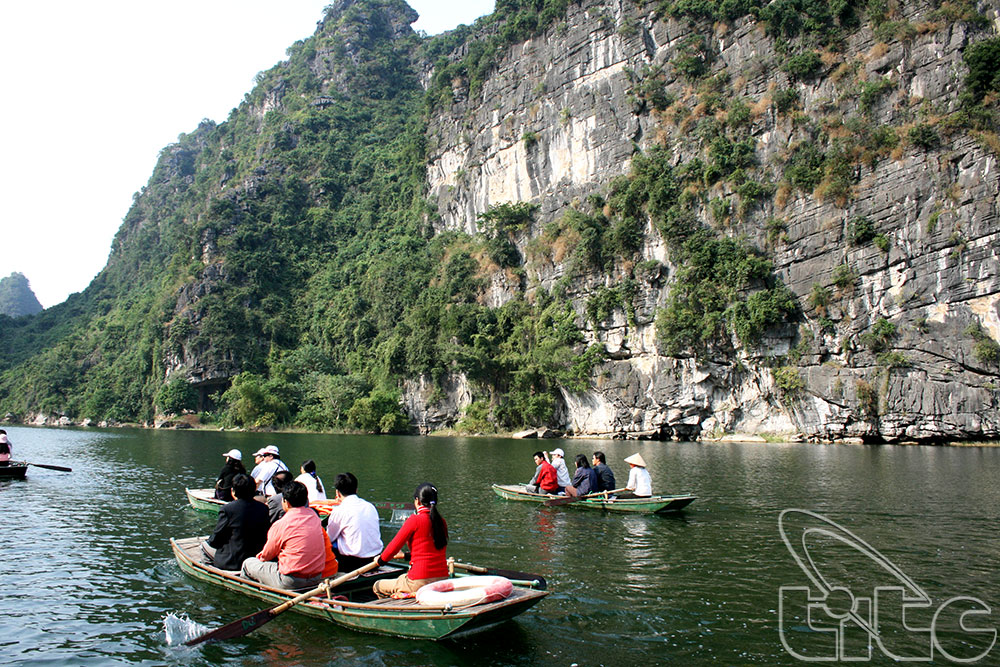(TITC) - Trang An Landscape Complex covers an area of 6,172ha in districts of Hoa Lu, Gia Vien, Nho Quan, Tam Diep Town and Ninh Binh City, about 90km to the southeast of Ha Noi
The complex is surrounded by a buffer zone of 6,268ha, mostly comprising paddy rice fields and villages. As a mixed cultural and natural property, Trang An Landscape Complex contains three protected areas, including Hoa Lu Ancient Citadel Cultural – Historical Area; Trang An – Tam Coc – Bich Dong Scenic Area and Hoa Lu Special-Use Primary Forest.

Located in the humid tropical region, Trang An Landscape Complex is a mountainous area that extends in a northwest-southeast direction. To the north and northwest of Trang An lie Bai Dinh karst hills; to the southwest and the south are Dong Tam – Son Ha and Tam Coc – Bich Dong karst ranges; to the southeast and northeast is Truong Yen karst range; to the northeast and the north is Trang An karst range. River network in Trang An is well developed with Hoang Long River to the north, Chanh River to the east, He River to the south, Ben Dang River to the west and river systems of Sao Khe, Ngo Dong and Den Voi in the heart of the heritage. Trang An Area was invaded and reworked by the sea many times in the recent geological past but is now emergent on land. Landform development over a period of more than five million years produced scenic landscape of extraordinary beauty – a blend of towering cliff-bounded mountains draped in natural rain forest, surrounded by huge and deeply developed internal basins whose clear and quietly flowing waters are connected through a myriad of underground streams and caverns, many of which are navigable by small sampans carrying tourists.
Outstanding values
Cultural value

Trang An is a prominent place in Southeast Asia and the world which contains abundant archaeological evidences preserved almost intactly, mostly shells, animal bones, pottery, stone tools, kitchen floor and human remains. This is an extremely valuable documentary treasure demonstrating the way that prehistoric human interacted with natural landscape and adapted to major changes of environment over more than 30,000 years, at least since the late Ice Age. During this time, they endured some of the most turbulent climatic and geographical changes in the Earth's history. Besides, cultural and historical relics such as pagodas, temples, palaces in Trang An also contribute to consolidating many archaeological documents.
Aesthetic value

The karst tower landscape of Trang An is among the most beautiful and awe-inspiring places of its kind anywhere in the world. Dominating the landscape is a spectacular array of cone-shaped rock towers whose sheer vertical walls rise abruptly 200m above the surrounding land and water. Narrow interconnecting ridges, which have been likened to mythical giant swords, enclose circular and linear depressions whose expansive waterways are linked by gently flowing streams winding through subterranean caverns up to one kilometer in length. Visitors, carried through these passages in small traditional sampans, can enjoy the multitude of fascinating carbonate stalactites, curtains and other decorations that adorn the ceilings. Dense rain forest covers the landscape, even clinging to the cliffs and peaks. Blending naturally and beautifully with the forests are the extensive rice paddy fields bordering the rivers, creating a picturesque patchwork of color, enlivened by the presence of local farmers and fisher folk engaged in their traditional way of life. Several historic temples and pagodas, some perched high on the valley walls and peaks, signify the important spiritual and religious associations with the landscape. The countryside of the surrounding buffer zone presents a picture of traditional rural life with gardens and fields among small villages linked by simple tracks, narrow roads and a network of streams and canals.
Geological and geomorphological value

Trang An displays the end stages of karst tower landscape evolution in a humid tropical environment. The product of deep dissection of an uplifted limestone massif over a period of millions years is a remarkable array of classical karst landforms, including cones and towers, depressions (cockpits), valleys (poljes), rockfall collapse structures and deposits, subterranean caverns and rivers, caves and speleothems. A network of cross-cutting parallel faults divides the area into cells and promotes the development of enclosed depressions. An altitudinal series of erosional notches in rock walls with associated caves, wave-cut platforms, beach deposits and marine shells is evidence of former stands of sea level.
On 23 June 2014, in Doha (Qatar), World Heritage Committee of United Nations Educational, Scientific and Cultural Organization (UNESCO) recognized officially Trang An Landscape Complex as World Cultural and Natural Heritage Site based on three criteria: culture, aestheticism and geology – geomorphology.
Main tourist sites
Hoa Lu Ancient Citadel Cultural – Historical Area: King Dinh Temple, King Le Temple, Co Am Pagoda, Kim Ngan Pagoda, Duyen Ninh Pagoda, Nhat Tru Pagoda, Thien Ton Grotto…
Trang An Scenic Area: Trinh Temple, Tran Temple, Tu Tru Temple, Dia Linh Cave, Sinh Duoc Cave, May Cave, Nau Ruou Cave, Bai Dinh Pagoda Complex…
Tam Coc – Bich Dong Scenic Area: Bich Dong Pagoda, Linh Coc Pagoda, Thai Vi Temple, Thien Huong Grotto, Tien Grotto, Thien Ha Grotto, But Cave, Mua Cave, Ca Cave, Thung Nham, Thung Nang, Co Vien Lau Ancient Village…
Tourism Information Technology Center